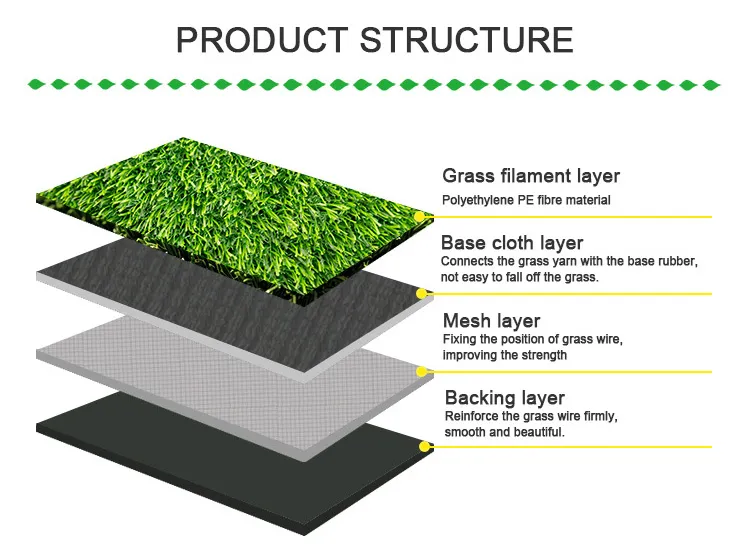
- Afrikaans
- Arabic
- Belarusian
- Bengali
- Czech
- Danish
- Dutch
- English
- Esperanto
- Estonian
- Finnish
- French
- German
- Greek
- Hindi
- Hungarian
- Icelandic
- Indonesian
- irish
- Italian
- Japanese
- kazakh
- Rwandese
- Korean
- Kyrgyz
- Lao
- Latin
- Latvian
- Malay
- Mongolian
- Myanmar
- Norwegian
- Persian
- Polish
- Portuguese
- Romanian
- Russian
- Serbian
- Spanish
- Swedish
- Tagalog
- Tajik
- Thai
- Turkish
- Turkmen
- Ukrainian
- Urdu
- Uighur
- Uzbek
- Vietnamese
imitation turf
Nov . 11, 2024 23:50 Back to list
The Rise of Imitation Turf A Sustainable Future for Landscaping
In recent years, imitation turf, also known as artificial grass or synthetic turf, has gained immense popularity across various sectors, including residential landscaping, commercial properties, and sports fields. This trend reflects a growing awareness of environmental issues, alongside a desire for low-maintenance and visually appealing outdoor spaces. As we delve into the intricacies of imitation turf, we can better understand its benefits, applications, and environmental implications.
Benefits of Imitation Turf
One of the most significant advantages of imitation turf is its minimal maintenance requirements compared to natural grass. Homeowners and businesses are increasingly seeking ways to reduce their time and resources spent on lawn care. Imitation turf does not require mowing, watering, or fertilizing, which saves money and effort. It remains verdant throughout the year, providing a consistently lush appearance regardless of weather conditions, making it an attractive option for those living in arid climates.
Another notable benefit is its durability. Quality synthetic turf is designed to withstand heavy foot traffic, making it ideal for sports fields, playgrounds, and pet areas. Unlike natural grass, which can become worn and patchy with frequent use, imitation turf retains its structural integrity and aesthetic appeal over time. Many manufacturers offer warranties on their products, which assures consumers of their long-lasting nature.
Environmental Considerations
While imitation turf offers various practical benefits, there are ongoing discussions about its environmental impact
. Traditional grass lawns require vast amounts of water, chemicals, and energy to maintain. In contrast, imitation turf eliminates the need for watering, which is a crucial consideration in drought-prone areas. Furthermore, the use of synthetic grass can reduce or even eliminate the need for harmful pesticides and herbicides, contributing to a healthier environment.However, concerns remain regarding the materials used to produce artificial grass. Most imitation turf is made from polyethylene or polypropylene, which are petroleum-based products. The production and disposal of these materials contribute to environmental pollution when not managed responsibly. Moreover, as imitation turf reaches the end of its lifespan—typically 10 to 15 years—it raises questions about recycling and waste management.
imitation turf

To address these concerns, innovative companies are exploring more sustainable alternatives. Biodegradable options are emerging, and some manufacturers are committed to using recycled materials in their products. Additionally, advances in recycling technology are helping to ensure that old turf can be repurposed rather than ending up in landfills.
Applications and Market Growth
The application of imitation turf extends beyond mere aesthetics. Sports fields benefit significantly from synthetic grass, as it provides a consistent playing surface that can be used year-round. Football, soccer, and baseball organizations have turned to imitation turf to create fields that offer safety and performance, even under adverse weather conditions.
Moreover, commercial properties, schools, and parks have embraced artificial grass for its ability to transform dull spaces into vibrant landscapes. Rooftop gardens, urban parks, and residential backyards alike utilize imitation turf to create inviting green areas that promote outdoor activities.
The market for imitation turf is expanding rapidly, driven by technological advancements and a growing consumer base that values sustainability and low-maintenance solutions. Industry analysts predict continued growth as more people and organizations recognize the benefits of synthetic grass.
Conclusion
Imitation turf represents a fascinating evolution in landscaping, combining aesthetics with functionality and environmental considerations. While challenges remain in terms of sustainability, advancements within the industry signal a promising future. As we continue to innovate and rethink our approach to outdoor spaces, imitation turf stands out as a viable alternative for those looking to create beautiful, low-maintenance, and environmentally responsible landscapes.
-
The Benefits of Artificial Turf for Indoors
NewsJul.15,2025
-
How Artificial Grass Suppliers Ensure Quality Products
NewsJul.15,2025
-
Artificial Grass and Pets: A Space for Relaxation
NewsJul.08,2025
-
Balcony & Outdoor Decoration with Artificial Grass
NewsJul.08,2025
-
Best Indoor Artificial Grass for Home
NewsJul.07,2025
-
Best Pet Turf for Dogs: Safe & Durable Artificial Grass Options
NewsJul.07,2025
Products categories









